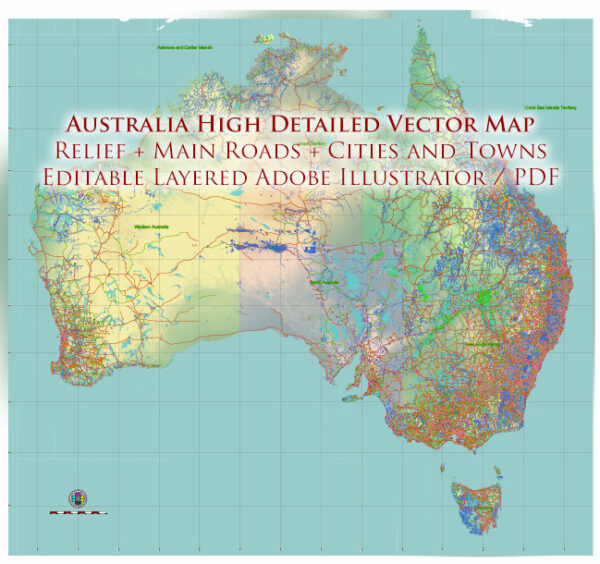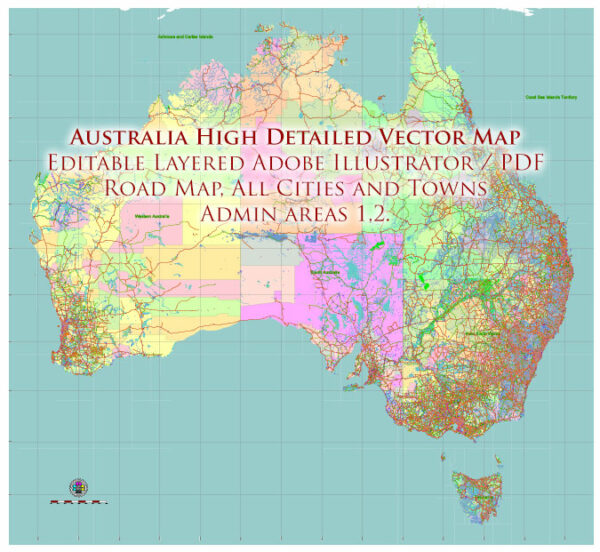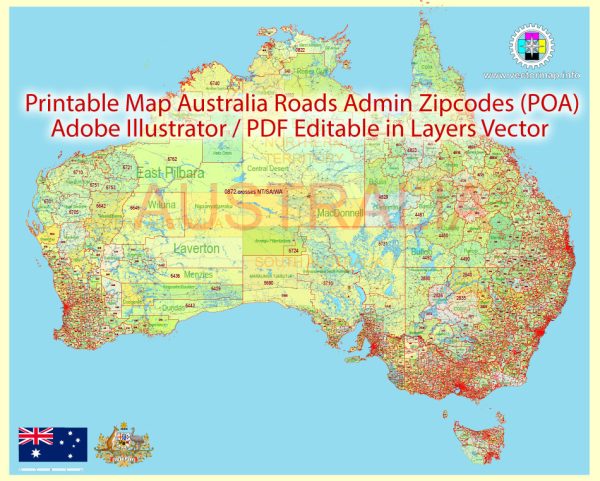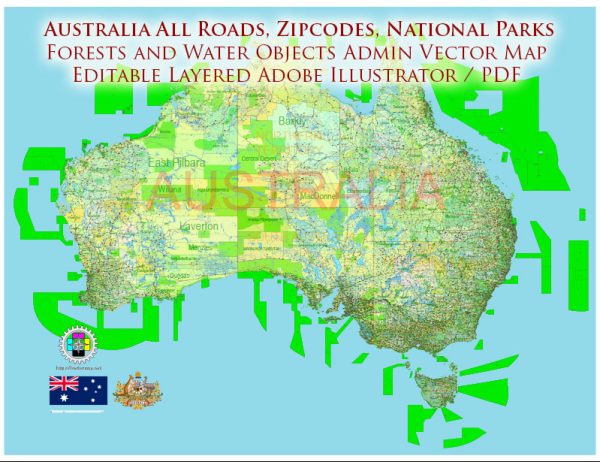Australia is a vast and diverse continent and country located in the southern hemisphere, surrounded by the Indian and Pacific Oceans. Here is a geographical description of Australia:
- Location: Australia is located in the Oceania region and is the world’s sixth-largest country by total area. It is situated between the coordinates of 25° and 40° South latitude and 113° and 154° East longitude.
- States and Territories: Australia is divided into six states and two territories. The states are New South Wales, Victoria, Queensland, South Australia, Western Australia, and Tasmania. The two major territories are the Australian Capital Territory (ACT) and the Northern Territory.
- Landform: The Australian continent features a wide variety of landscapes. The interior of the continent is dominated by vast deserts, most notably the famous Australian Outback, which includes the Simpson Desert, the Great Victoria Desert, and the Nullarbor Plain. In the north, you’ll find tropical rainforests, while the eastern coast boasts the Great Dividing Range, a series of mountain ranges.
- Coastline: Australia has a long coastline that stretches for over 25,000 kilometers (15,500 miles). It’s home to numerous beautiful beaches, rugged cliffs, and the Great Barrier Reef, the world’s largest coral reef system, located in the Coral Sea off the coast of Queensland.
- Rivers and Lakes: The country has several major river systems, including the Murray-Darling River system, the largest in the country, and the Lake Eyre Basin. However, many Australian rivers are relatively short and can be seasonal due to the arid climate.
- Climate: Australia experiences a wide range of climatic conditions due to its vast size. The northern regions have a tropical climate, while the southern parts have a more temperate climate. Inland areas are arid or semi-arid, with large areas characterized by desert conditions.
- Flora and Fauna: Australia is known for its unique and diverse wildlife. It is home to a wide range of endemic species, including kangaroos, koalas, wombats, and various species of marsupials. The country’s flora is equally unique, with a significant proportion of native plants found nowhere else in the world.
- Natural Wonders: Apart from the Great Barrier Reef, Australia is home to numerous other natural wonders, including Uluru (Ayers Rock), a massive sandstone monolith in the heart of the continent, and the Bungle Bungle Range, a unique rock formation in Western Australia.
- Islands: Australia includes several offshore islands and territories. Some of the most well-known include Tasmania, which is the island state, and Christmas Island and the Cocos (Keeling) Islands in the Indian Ocean.
- Geographic Extremes: Australia is geographically diverse, with several notable extremes. It is the flattest continent, has the world’s smallest continent, and is the driest inhabited continent, with a large portion of its land being desert.
- Population Distribution: The majority of Australia’s population is concentrated along the eastern and southeastern coasts, with major cities like Sydney, Melbourne, Brisbane, Perth, and Adelaide. The interior, particularly the Outback, is sparsely populated.
In summary, Australia is a geographically diverse country known for its unique and varied landscapes, rich biodiversity, and extreme geographical features. Its climate, flora, and fauna reflect the country’s vastness and isolation from the rest of the world.





 Author: Kirill Shrayber, Ph.D.
Author: Kirill Shrayber, Ph.D.